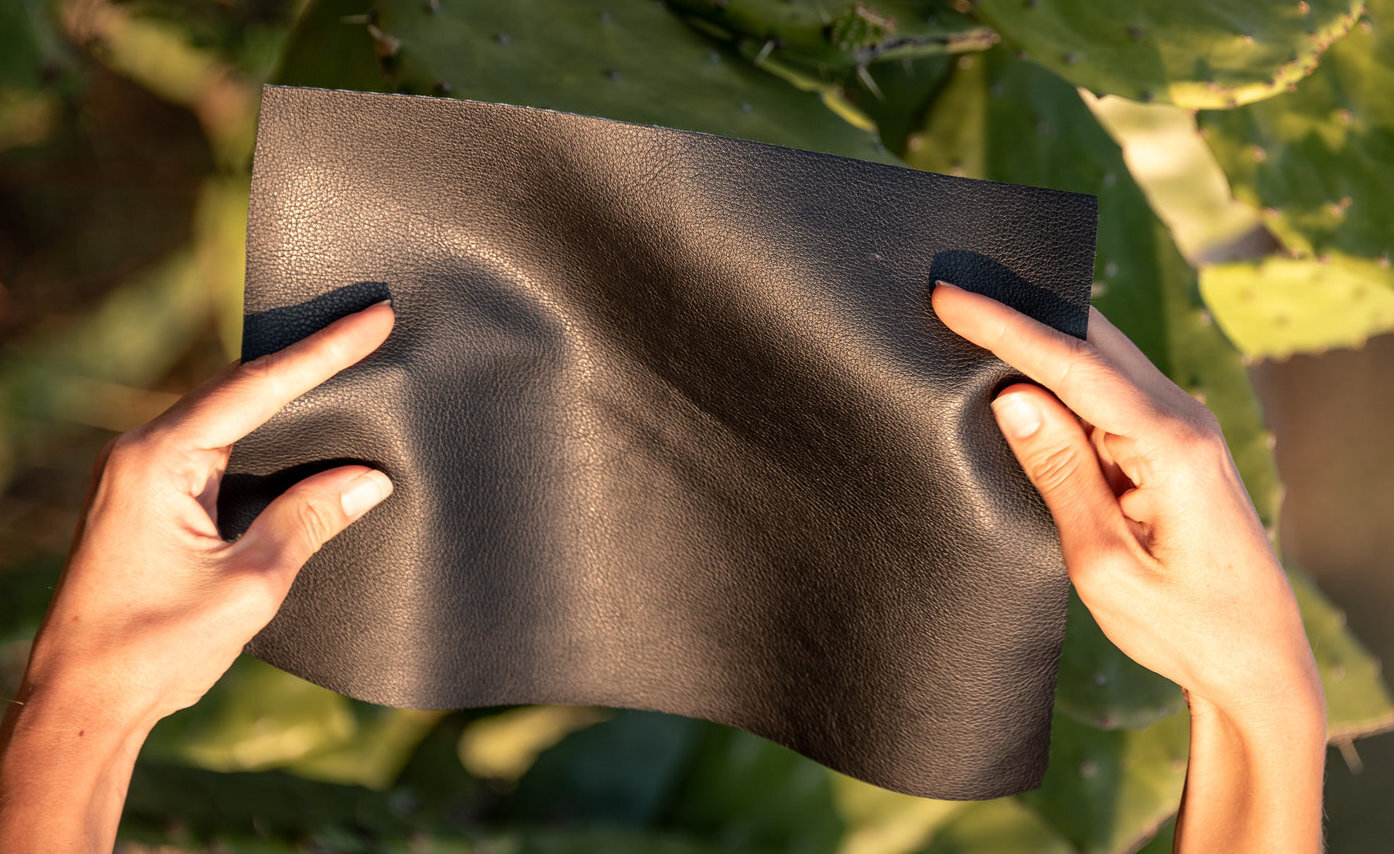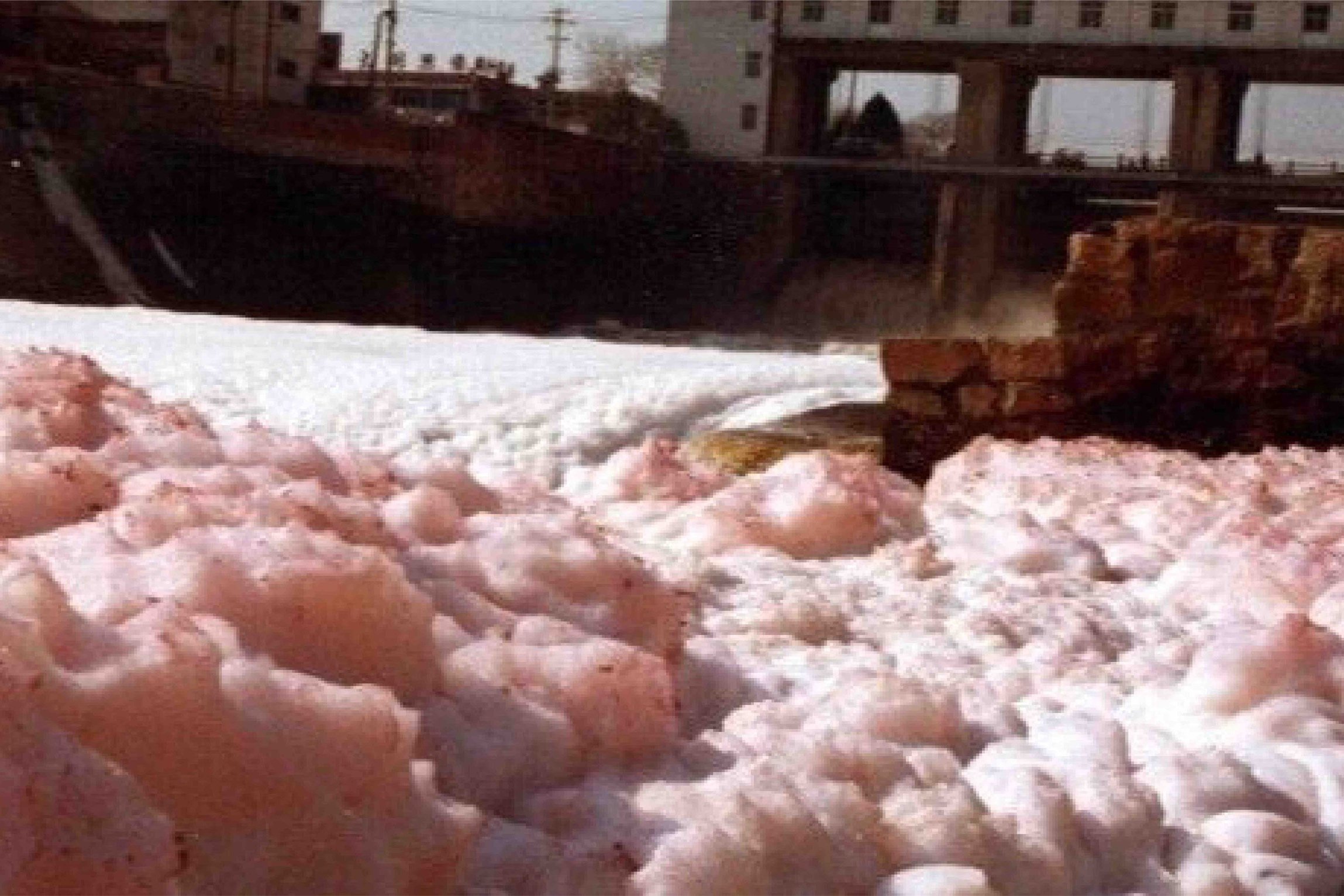Tannery workers’ suffering in fashion supply chains
People of colour working in tanneries confront health-related and environmental injustices so consumers can wear animal skin.
The tanning of animal skins causes pollution and sickness.
Chemical harm
The majority of leather is tanned with chemicals like chromium (90%), formaldehyde, and arsenic.
These chemicals cause chronic coughing, skin ailments and other diseases in tannery workers.
Each day, an estimated 40 million litres of untreated waste-water flows through major tanning country India and into the Ganges River, which people drink from and bathe in. These chemicals impact not only workers, but surrounding communities.
Image: Larry C. Price
Workers handling blue chromium-covered skins. ~90% will be exported to countries in the west.
Environmental racism
Tanneries appear on the Environmental Protection Agency’s Superfund list more than any other type of business.
So toxic, 95% of US tanneries now operate overseas to avoid environmental oversight penalties. The land under ex-tannery sites cannot be used for farming, development, or often even be sold.
The choice to move tanneries from the west to countries filled with Brown people is fuelled by racism. The implication of this choice is that the environmental impacts and pollution suffered as a result of tanneries are acceptable for Brown people, but not white people.
Image: Larry C. Price
'This worker said his hands peeled off in sheets’.
‘Cancer villages’
Tannery workers suffer cancer at high rates due to exposure to tanning chemicals, which are known carcinogens.
Communal areas in top tanning country China are even being referred to as ‘cancer villages’.
The link between industry chemical pollution and cancer in lower income communities is well studied, and partially due to leather tanneries and their impact.
Image: Green Peace
Extreme chemical foam pollution due to tanneries and industry in China’s Huai river.
The Toxic Price of Leather, by Sean Gallagher and the Pulitzer Centre. Shot in India, major leather exporter.
Children work among these serious violations of human rights and safety.
Children have been documented expressing their discomfort and pain caused by their work, but state that they need to continue working in order to support their family. If liveable wages were paid to adults, this would not occur.
‘Without any safety we work here only for our family living. Sometimes we feel sick working in this toxic environment but we need to work there.’
- Solayman, 17.
Image and information:
11-year-old Miraj is exposed to dangerous chemicals while soaking hides.
Zakir Hossain Chowdhury / Barcroft Media

The future of fashion is made of plants and sustainable, lab-grown materials, not chemically tanned animal skins impacting everyone involved in their production.
Want to keep learning?
-

Garment workers
Garment workers are often commodified and denied basic human rights. Many work under conditions that are considered to be modern day slavery.
-

An industry built on exploitation
Fashion can signify individual expression and has artistic merit, but, it has, since the industrial revolution, relied on exploitation of enslaved people and then wage workers.
-

Farm workers
Raising animals for exploitation and slaughter has serious mental health impacts for many farmers. The mental distress that comes with such violent work is immense.






